I have been trying to create a map of membership locations from postcodes across the UK as a project in learning R. I have achieved nearly the result I wanted, but it's proving very frustrating getting the glitches sorted. This image is my current best effort: 
I still want to change:
get rid of the extraneous legend (the "0.16", "0.5" squares), which are coming from the size arg to geom_point. If I remove the size=0.16 arg the guide/legend disappears, but the geom size returns to the default too. This also happens for the "black" guide -- coming from a colour obviously -- but why?
properly clip the stat_density2d polygons, which are exhibiting undesireable behaviour when clipped (see bottom-right plot near the top)
have control over the line-width of the geom_path that includes the county boundaries: it's currently too thick (would like about 1/2 thickness shown) but all I can achieve by including 'size' values is to make the lines stupidly thick - so thick that they obscure the whole map.
The R code uses revgeocode() to find the placename closest to the centre point but I don't know how to include the annotation on the map. I would like to include it in a text-box over the North Sea (top right of UK maps), maybe with a line/arrow to the point itself. A simpler option could just be some text beneath the UK map, below the x-axis ... but I don't know how to do that. geom_rect/geom_text seem fraught in this context.
Finally, I wanted to export the map to a high-res image, but when I do that everything changes again, see:

which shows the high-res (~1700x1800px) image on the left and the Rstudio version (~660x720px) on the right. The proportions of the maps have changed and the geom_text and geom_point for the centre point are now tiny. I would be happy if the gap between the two map rows was always fairly small, too (rather than just small at high res).
Code
The basics: read list of members postcodes, join with mySociety table of postcode<>OSGB locations, convert locations to Lat/long with spTransform, calculate binhex and density layers, plot with ggmap.
The code for all this is somewhat lengthy so I have uploaded it as a Gist:
https://gist.github.com/rivimey/ee4ab39a6940c0092c35
but for reference the 'guts' of the mapping code is here:
# Get a stylised base map for the whole-of-uk maps.
map.bbox = c(left = -6.5, bottom = 49.5, right = 2, top = 58)
basemap.uk <- get_stamenmap(bb = map.bbox, zoom=calc_zoom(map.bbox), maptype="watercolor")
# Calculate the density plot - a continuous approximation.
smap.den <- stat_density2d(aes(x = lat, y = lon, fill = ..level.., alpha = ..level..),
data = membs.wgs84.df, geom = "polygon",
breaks=2/(1.5^seq(0,12,by=1)), na.rm = TRUE)
# Create a point on the map representing the centroid, and label it.
cmap.p <- geom_point(aes(x = clat, y = clon), show_guide = FALSE, data = centroid.df, alpha = 1)
cmap.t1 <- geom_text(aes(x = clat, y = clon+0.22, label = "Centre", size=0.16), data = centroid.df)
cmap.t2 <- geom_text(aes(x = clat, y = clon+0.1, label = "Centre", size=0.25), data = centroid.df)
# Create an alternative presentation, as binned hexagons, which is more true to the data.
smap.bin <- geom_hex(aes(x = lat, y = lon),
data = membs.wgs84.df, binwidth = c(0.15, 0.1), alpha = 0.7, na.rm = TRUE)
# Create a path for the county and country boundaries, to help identify map regions.
bounds <- geom_path(aes(x = long, y = lat, group = group, colour = "black"), show_guide = FALSE,
data = boundaries.subset, na.rm = TRUE)
# Create the first two actual maps: a whole-uk binned map, and a whole-uk density map.
map.bin <- ggmap(basemap.uk) + smap.bin + grad + cmap.p + cmap.t1
map.den <- ggmap(basemap.uk) + smap.den + alpha + cmap.p + cmap.t1
# Create a zoomed-in map for the south-east, to show greater detail. I would like to use this
# bbox but google maps don't respect it :(
map.lon.bbox = c(left = -1, bottom = 51, right = 1, top = 52)
# Get a google terrain map for the south-east, bbox roughly (-1.7,1.7, 50.1, 53)
basemap.lon <- get_map(location = c(0,51.8), zoom = 8, maptype="terrain", color = "bw")
# Create a new hexbin with more detail than earlier.
smap.lon.bin <- geom_hex(aes(x = lat, y = lon),
data = membs.wgs84.df, bins=26, alpha = 0.7, na.rm = TRUE)
# Noe create the last two maps: binned and density maps for London and the SE.
lonmap.bin <- ggmap(basemap.lon) + bounds + smap.lon.bin + grad + cmap.p + cmap.t2
lonmap.den <- ggmap(basemap.lon) + bounds + smap.den + alpha + cmap.p + cmap.t2
# Arrange the maps in 2x2 grid, and tell the grid code to let the first row be taller than the second.
multiplot(map.bin, lonmap.bin, map.den, lonmap.den, heights = unit( c(10,7), "null"), cols=2 )